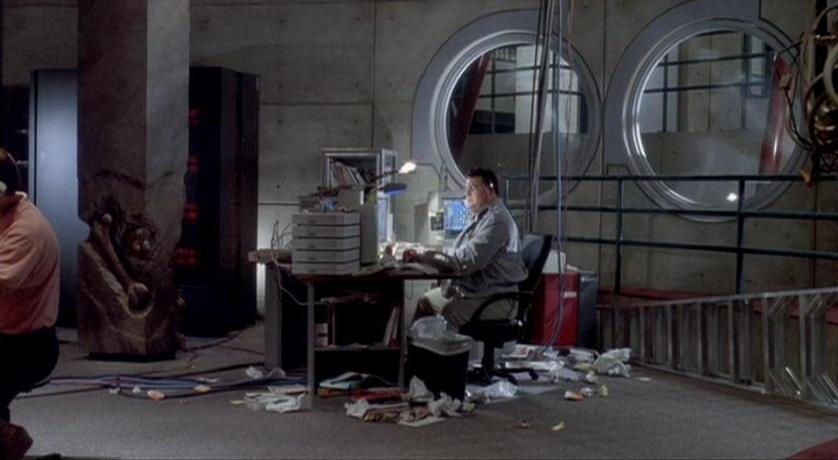September 2025 Update
- Details
- Written by Nicky Wybouw
>> Together with Felipe Kauai, we wanted to better understand how Wolbachia infection persists upon loss of CI in haplodiploid hosts. In our study, we focused on both CI loss through the evolution of host suppression and through the dysfunction of cif operons. Please go HERE for the article!
>> Ernesto Villacis‐Perez visited our lab and sampled several Tetranychus populations in the dunes of West Flanders.
>> Gerben Debruyn started his post-doc project in our lab! He will start to unravel how phasmid eggs interact with parasitoids and symbionts.
>> Margarita, Emma, and Siebe also gave their first presentations at ESEB2025!



July 2025 Update
- Details
- Written by Nicky Wybouw
>> Spearheaded by Thomas, our study on the interaction between the yellow meadow ant Lasius flavus and the root aphid Anoecia zirnitsi is published. We demonstrate that L. flavus strongly increases the aphid eggs’ protection against insect predators and fungal pathogens. Go here for more information: https://doi.org/10.1098/rsos.250217
>> We were also visited by Charles Robin (University of Melbourne) and Kosuke Kataoka (TUAT). Kosuke gave a great research seminar and we had a lot of fun discussing various ideas and ongoing experiments.

May 2025 Update
- Details
- Written by Nicky Wybouw
Driven by Yuta Ohata, we published our first study of CI strength variation in leaf-mining Liriomyza flies - https://doi.org/10.1098/rsos.242137.
We uncovered paternal transmission of Wolbachia genic elements (including Type I and Type V cif operons!) in Liriomyza sativae, collecting strong evidence of horizontal genome transfer. We further established a wLtri transinfection in L. sativae and observed suppression of CI. Our labs are currently testing the hypothesis that host suppression of CI might evolve through horizontal transfer of cif operons into the host nuclear genome.
Also, Felipe Kauai obtained a three-year postdoctoral FWO fellowship and will be joining the Wybouw lab in October!
August 2024 Update
- Details
- Written by Nicky Wybouw
>>> Lennert Beele and Siebe van Wunnik recently started their PhD projects. They will study the mechanisms and community consequences of herbivore-plant interactions. Excited to dissect these interactions both in the molecular lab as in the field!
>>> Happy to announce that I have been selected as an Invitational Fellow of JSPS (Japan Society for the Promotion of Science). I will be hosted by Yohsuke Tagami and I will visit several research institutes in Japan, including Shizuoka University.

June 2024 Update
- Details
- Written by Nicky Wybouw
>>> Together with Thomas Parmentier, we published a first chapter in our study of the causes and consequences of granivory in silverfish. CLICK HERE.
We collected silverfish species that interact differently with ants. Our collection of myrmecophilous silverfish included obligate generalists and specialists.
To study their feeding ecologies, we combined stable isotope profiling, feeding assays, phylogenetic reconstruction, and microbiome analyses.
We show that the social interactions of Messor-specialized silverfish shape their trophic niche, suggestive of a granivorous lifestyle. Controlled feeding assays confirm that these silverfish can feed on plant seeds.
We further uncover that these Messor-specialized silverfish carry different bacterial symbionts compared to congeneric silverfish with a broad ant host range.
Here, Weissella bacteria display a remarkable association with a granivorous lifestyle.
>>> Lennert, Tessa, and Kobe recently submitted their master dissertations and are about to defend.
>>> We were visited by Steven Van Belleghem and his group, a first of many mutual lab days!

Autumn 2023 Update
- Details
- Written by Nicky Wybouw
>>> Presented the group's ongoing work at ECE 2023 (Greece).
Summer 2023 update
- Details
- Written by Nicky Wybouw
A great deal of exciting news to announce;
- In a long-running study led by Silke and Yu-Hsien, we identified and characterized a salivary enzyme of an insect herbivore that mediates a volatile plant signal that attracts predators. We shed light on its complex evolutionary origins and uncovered a role in fundamental developmental processes. Click HERE for more info.
- Awesome science, people, and ambience at Wolbachia2023 (Greece)!
- We have a new vacancy for a PhD fellow! This project will help to unravel the impact of symbionts on the evolution of herbivory and reproduction in insects and mites. Click HERE for more information. I would be happy to answer questions about the position, work, and our group!
Postdoc vacancy on the molecular basis of hybrid dysfunction!
- Details
- Written by Nicky Wybouw
We have a vacancy for a post-doctoral researcher! The position focuses on the molecular-genetic basis of symbiont- and nuclear-associated hybrid defects.
Apply online through the Ghent University e-recruitment system before April 3, 2023.
For more information, please click HERE.
Two PhD vacancies for HYBRIPEST
- Details
- Written by Nicky Wybouw
Within my ERC project, we have vacancies for two PhD fellows.
Please click here for more information on the PhD vacancy that centers on mechanisms of host-symbiont interactions.
Please click here for more information on the PhD vacancy that centers on mechanisms of hybrid defects.
I would be happy to answer questions about the positions, work, and our group!
May 2022
- Details
- Written by Nicky Wybouw
It has been a brilliant week!
Our comparative genomics manuscript on symbiotic Ca. Tisiphia was published in Nature Communications, work that was spearheaded by Helen and Stefanos (click here for more!). In addition, our study that identifies and dissects intraspecific host modulation of Wolbachia-mediated CI was also published in Evolution Letters. Here, we uncover that spider mite males and females control different features of CI and confirm that the evolution of reproductive parasitism is contingent on host genetics (click here for more!). Next week, our work with Jens Zarka and Thomas Parmentier on intersexuality in Porcellio isopods will also be published!
Lennert Beele also defended his excellent thesis on Dobzhansky-Muller incompatibilities and Wolbachia-induced CI in Tetranychus urticae and Tetranychus cinnabarinus.
Tomorrow, I’m going to Montpellier for a week of meetings and pilot experiments (and hopefully some wine and cheese too!).
Summer 2021
- Details
- Written by Nicky Wybouw
Overdue for an update!
The last PhD chapter of Masoumeh is now published by PLOS Genetics! Here, we uncovered the complex genetic architecture underlying resistance to pyflubumide (a complex II inhibitor) by combining transcriptomic analyses and high-resolution genetic mapping. Two QTLs centered on cytochrome P450s that were overexpressed in resistant populations. We further corroborated the involvement of one of these P450s, CYP392A16, in resistance by in vitro functional expression and metabolism studies. Our genomic analyses also strongly indicated that gene amplification of CPR could enhance cytochrome P450-mediated detoxification, suggesting a novel molecular mechanism of toxicokinetic resistance.
In our research to study genetic conflict, we are currently tracking the spread of Wolbachia in replicated experimental populations that differ in their ability to suppress reproductive parasitism. We are at day 60 (approx. fifth-sixth generation) and already extracted DNA from 300 female mites. We took a risk, but are getting great results!
Autumn 2020
- Details
- Written by Nicky Wybouw
Summer is over and I sampled my last T. urticae field population yesterday in the Beisbroek forest near Brugge.
I am very proud to announce that Masoumeh’s PhD thesis has been approved by the Doctoral Committee and that her doctoral defence ceremony will take place on November 17th at 15:00. Unfortunately, due to travel restrictions, the ceremony will mostly be virtual without in-person interactions. But everyone will be able to follow the procedures via a livestream!
Some weeks ago, I finished Martin Brasier’s truly excellent book Darwin's Lost World where he very clearly outlines the recent scientific discoveries and theories on the Cambrian explosion. The author also recounts his own wonderful personal research history and takes you to various remote locations across the globe where his key findings were made.
Summer 2020
- Details
- Written by Nicky Wybouw
I am delighted to announce that BOF will be funding my research project The eco-evolutionary drivers of the Wolbachia pandemic in garden spider mites from October 2020. My host PI will be Dries Bonte at the Terrestrial Ecology lab of Ghent University.
I will continue my work on reproductive trait and genome evolution that is shaped by animal-microbe symbiosis. Although my main focal system remains Tetranychus and Bryobia spider mites, my research is now also incorporating other miniature beasts, including ants and silverfish.
Lately, I have been busy with generating a first set of phylogenomic trees to better understand the origin of an enigmatic clade of Wolbachia that is restricted to Bryobia spider mites. In addition, I have been enjoying some modest field work these last couple of weeks. Together with Thomas Parmentier, we have been collecting ants for collaborative projects!

Spring 2020
- Details
- Written by Nicky Wybouw
Although I cannot get much work done, and this period induces some level of stress for everyone, I have been greatly enjoying the extra family time. We have been exploring much of the fauna and flora in our little corner of the world. My son especially favours mason bees (not honey bees - they are not fluffy enough). Below, I have added a photo of a female Osmia cornuta. Meanwhile, my daughter is slowly learning not to eat all the leaves we come across during our walks.
I am also proud to announce that Masoumeh's second manuscript has been published in Journal of Pest Science (click here!). Here, we present a first insight into the complex molecular mechanisms that underlie pyflubumide resistance in T. urticae.
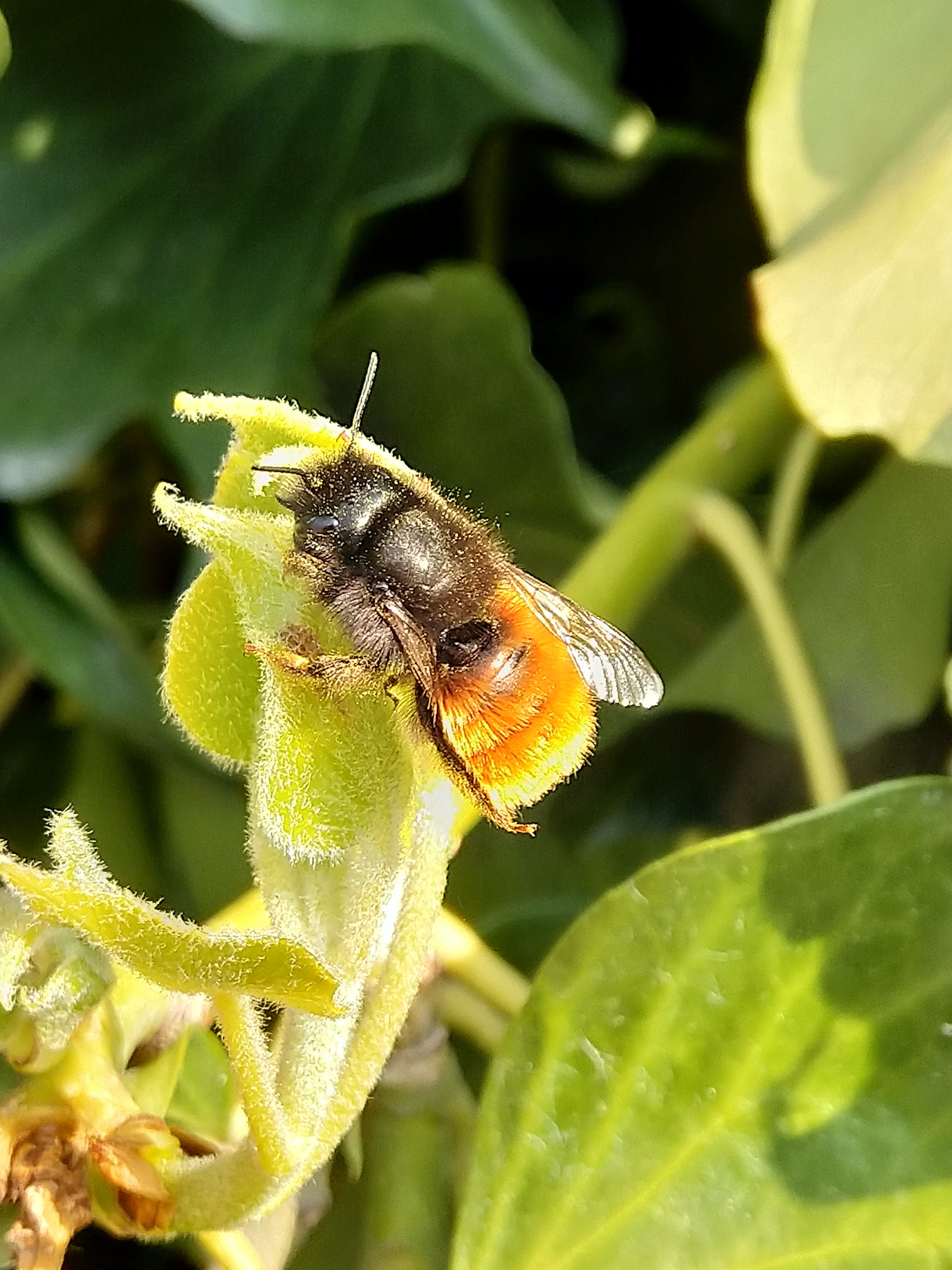

The contribution of microbial associates to host ecology and evolution
- Details
- Written by Nicky Wybouw
Together with Flore Zélé (University of Lisbon), we are putting together a special issue for Current Zoology that focuses on the effect of bacterial symbionts/communities on animal host ecology and evolution. Researchers that might be interested in contributing to this special issue, please contact me or Flore! Deadline for abstract submission is 30 May 2020, deadline for manuscript submission is 30 August 2020. Go HERE for more information.
Also, I am about to finish In The Blink of An Eye by Andrew Parker – a book that aims to unravel the processes that underlie the Cambrian explosion. Although I do not always agree with the generalizations and conclusions, the book offers an interesting insight into the evolutionary history of animal eyes and colourations.
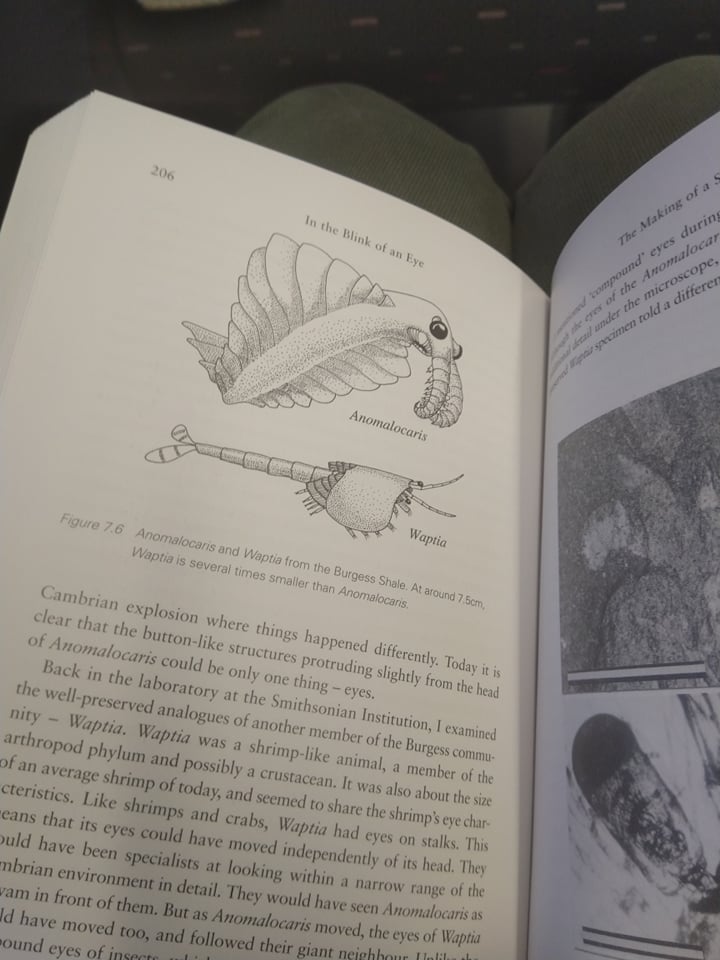
Salt Lake City 2019
- Details
- Written by Nicky Wybouw
Today is my last day of my four week research stay at the lab of Prof Richard M. Clark, Salt Lake City, Utah. Using read data available at Richard’s lab, I was able to generate new sets of genome assemblies, which now creates a new momentum in my ongoing analyses of genome evolution of the endosymbionts that infect various species of spider mites. I also focused on the levels of genomic diversity in Bryobia spider mite species.
During my stay, I read The Adventures of Alexander von Humboldt, an excellent book written by Andrea Wulf. Very informative to discover the holistic approach of Humboldt’s studies.

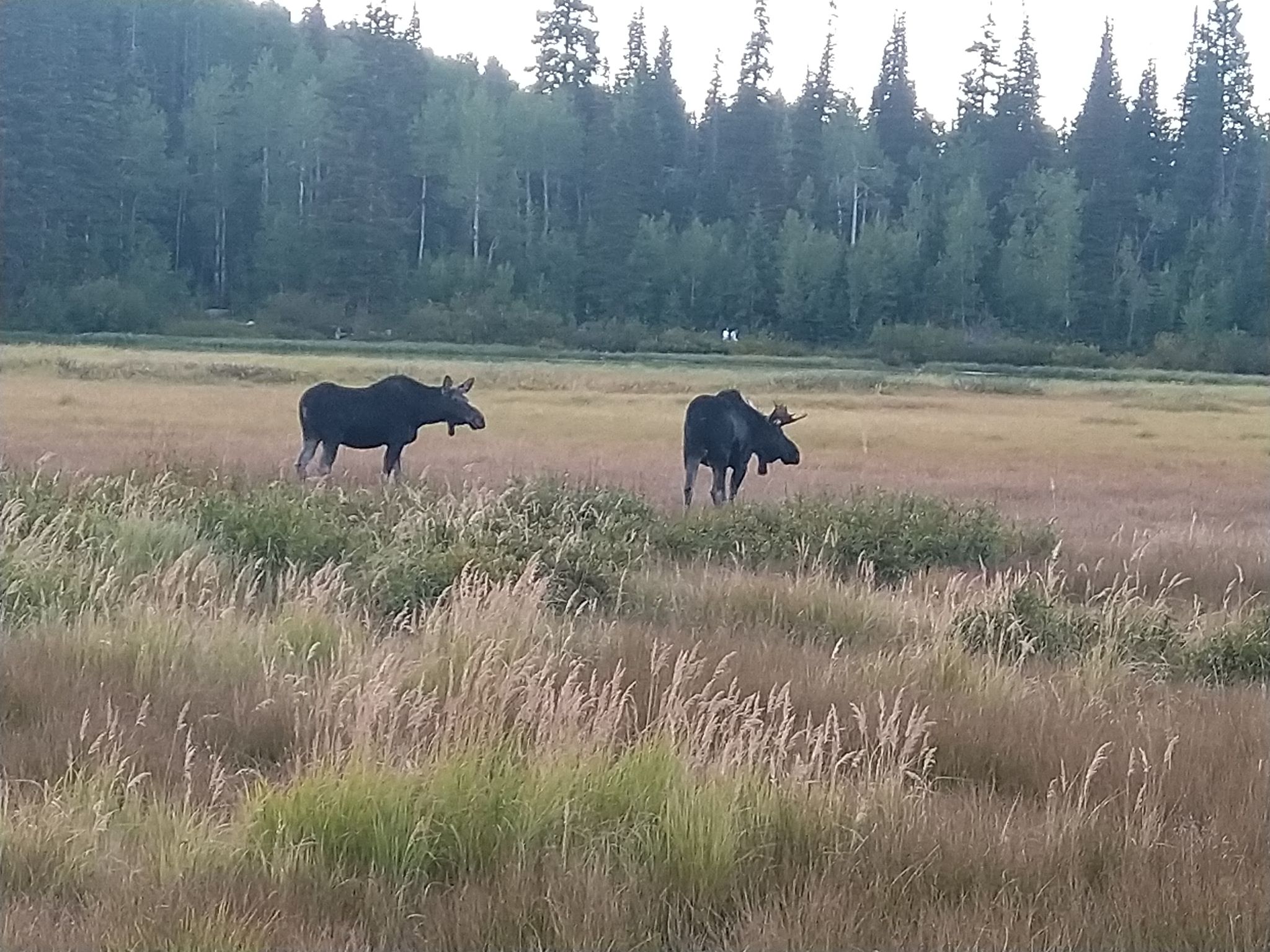

Lemon Pigment Mutant
- Details
- Written by Nicky Wybouw
Today, Proceedings of the Royal Society B published our work on the genetic basis of keto-carotenoid-based coloration in spider mites. By focusing on a lemon-colored mutant of the spider mite T. kanzawai and combining a number of genomic techniques, we were able to identify CYP384A1, a cytochrome P450 monooxygenase, as the carotenoid ketolase gene, responsible for the synthesis of red colored keto-carotenoids in spider mites. Please click HERE for further reading. We also feel very honored that the journal decided to adorn the cover of this issue with our lemon pigment mutant. Note the absence of the red eyespots and bright red body coloration.
Also, I am about to finish Wonderful Life by S.J. Gould, which focuses on the bizarre and enigmatic Burgess Shale fauna. This excellent book outlines the fascinating initial discovery and later re-interpretation of the disparate animals that inhabited the shallow seas over 500 Ma, shortly after the Cambrian explosion.
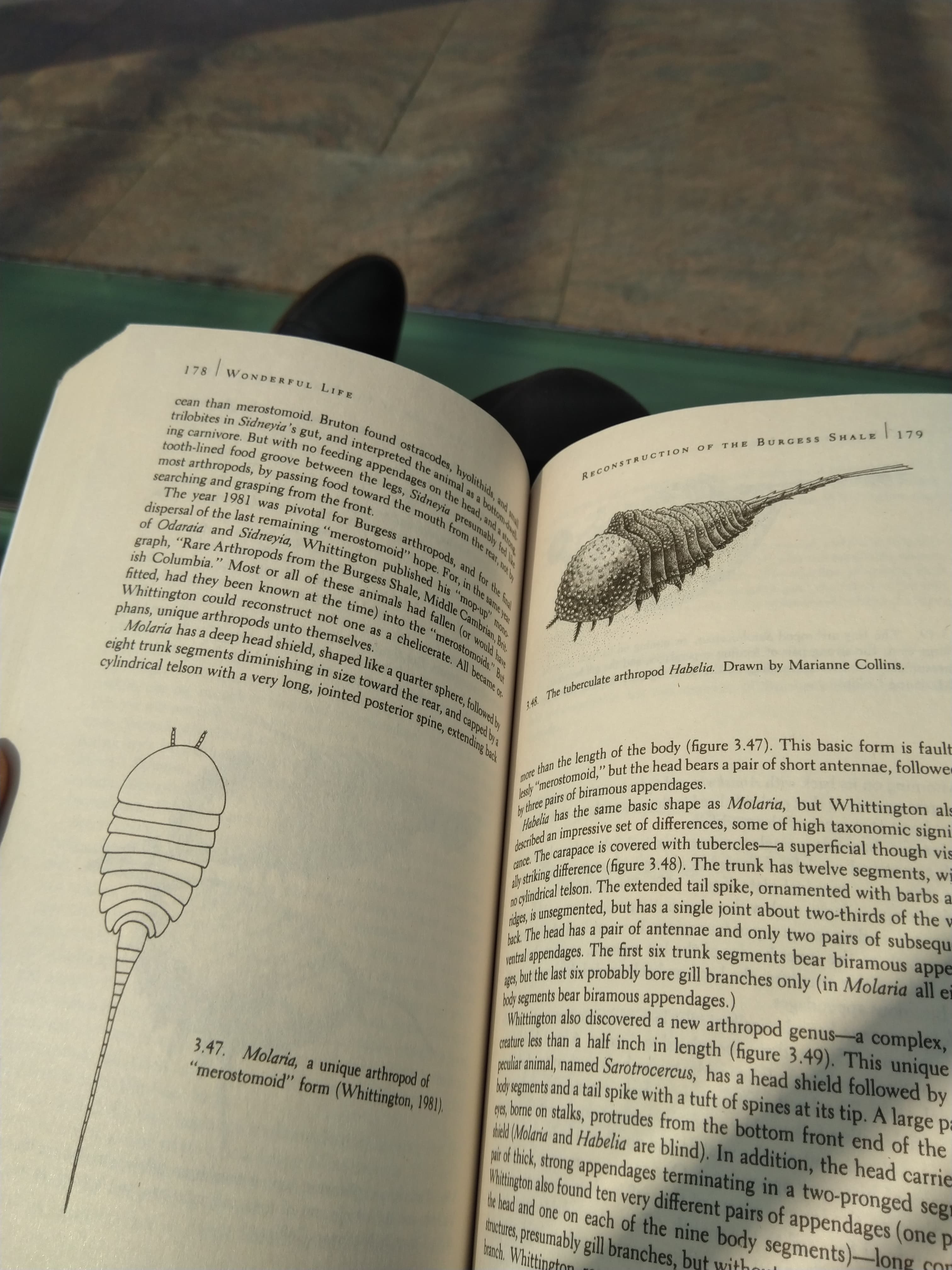
Three chromosomes, and a column
- Details
- Written by Nicky Wybouw
Delighted to announce that a study that started over four years ago and on which many people have worked has been published in GENETICS. By tracking allele frequency changes in populations under long-term selection, we were able to assemble the genome of Tetranychus urticae to the chromosome level. We subsequently used this new genomic resource to characterize the genomic architecture underlying pesticide resistance and host plant adaptation. Please click here for Wybouw&Kosterlitz et al!
In addition, Phegea published my column on mite taxonomy in their March edition. Please click here to read!
I also finished reading Animal Kingdom, by Jack Ashby. The book is both highly entertaining and informative, and was excellent to refresh my memory of my zoology courses when I was a bachelor student (already too many years ago). I would like to add that the book seems to be quite rain proof. My copy survived (more or less) a hailstorm at the Belgian coast and in the Scottish countryside.
MinION and ESEB19
- Details
- Written by Nicky Wybouw
Last week, I received my first MinION, and can't wait to start sequencing Bryobia genomes and exploring the data! Also, I am happy to announce that Ernesto Villacis-Perez and myself are hosting a symposium that focuses on plant-arthropod interactions for the upcoming ESEB19 conference. Invited speakers are Noah K. Whiteman and Silke Allmann. Our symposium is entitled: 'S22. Evolution of host-plant use in arthropods". For more information, please go to https://eseb2019.fi.
Hope to see you there!
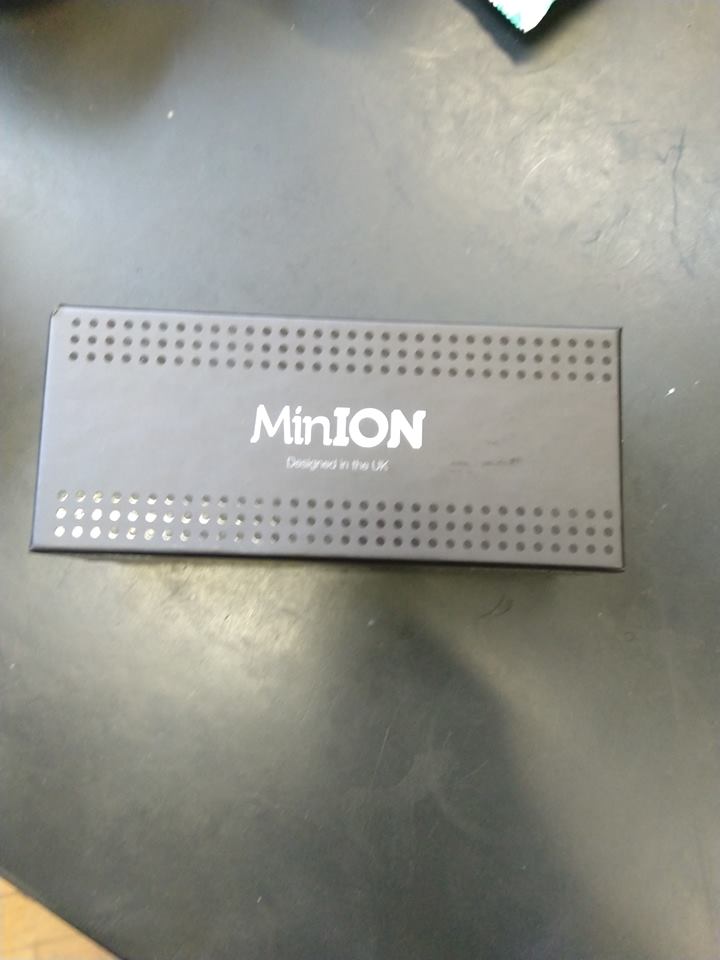
Bryobia Garden Pest
- Details
- Written by Nicky Wybouw
Very proud to announce that Research Foundation – Flanders kindly granted my research proposal on the mechanisms underlying the genomic diversification and global spread of a common parthenogenetic Bryobia garden pest. With this FWO grant (1513719N), which already starts in January 2019, I will generate an extensive genomic and transcriptomic dataset of the common garden pest. The different evolutionary scenarios that explain its great genetic diversity and global distribution will be formally tested on the molecular level. In parallel, I will also investigate how the garden pest overcomes seasonal variation across its geographical range.
I also just finished reading Congo Journey of Redmond O’Hanlon, a travelogue of the naturalist’s wanderings in Congo in search of the enigmatic Mokélé-mbembé, an ancient sauropod living in Lake Télé. Hilarious accounts of his struggles in the African jungle are combined with masterful observations of African wild life (especially on the great diversity of birds).
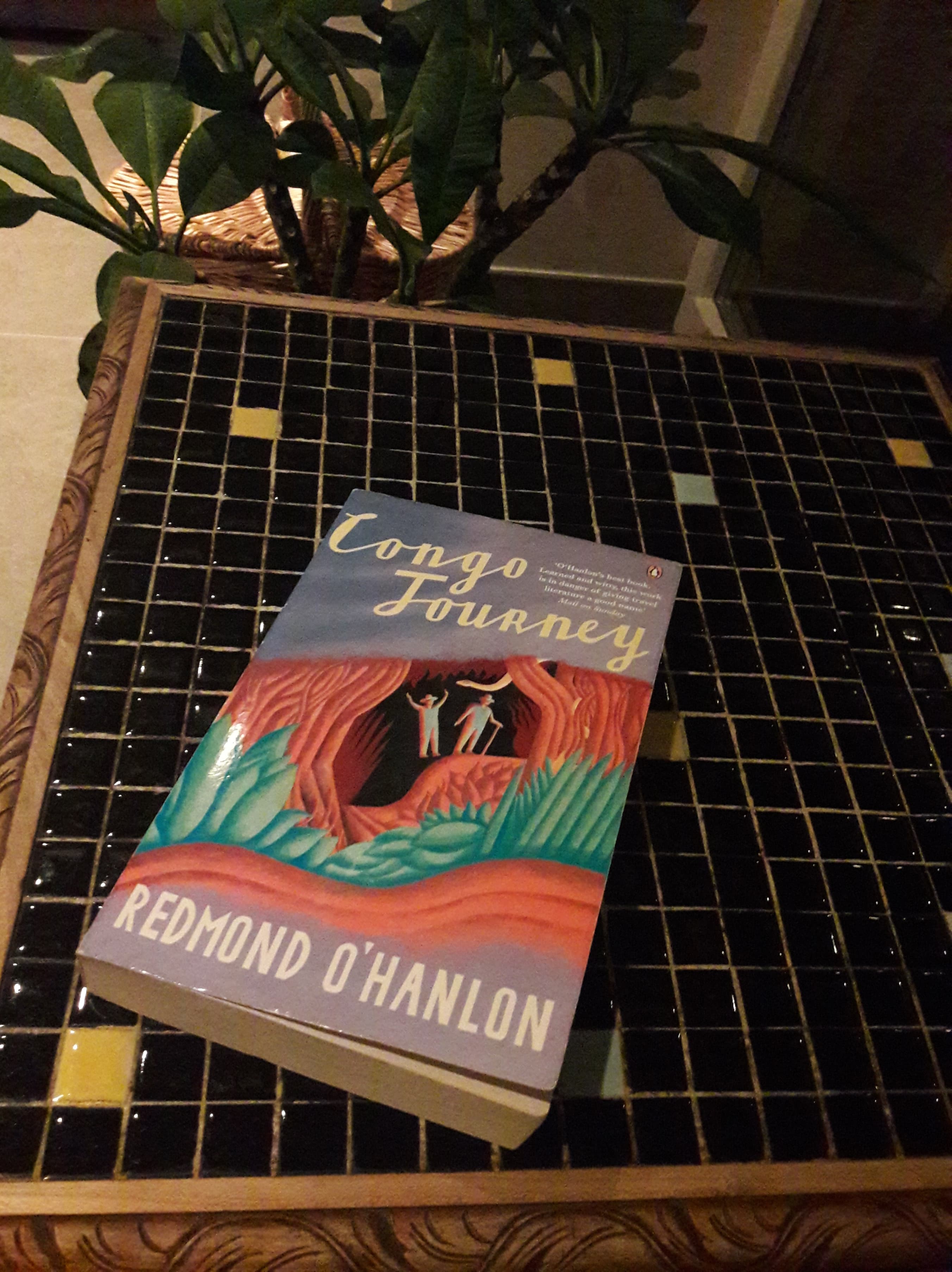
Autumn Update
- Details
- Written by Nicky Wybouw
Proud to announce the publication of two manuscripts that focus on the opposite sides of plant arthropod interactions. Click HERE for our study of tomato responses to mite feeding, and HERE for spider mite responses associated with long-term host plant transfers.
Also, I finished Anurag Agrawal's excellent book on monarch butterflies and their milkweed hosts. It narrates the evolutionary arms race between these herbivores and their host plants perfectly and also unravels other aspects of the natural history of these migrating insects. A captivating and nicely illustrated book for the daily commute!
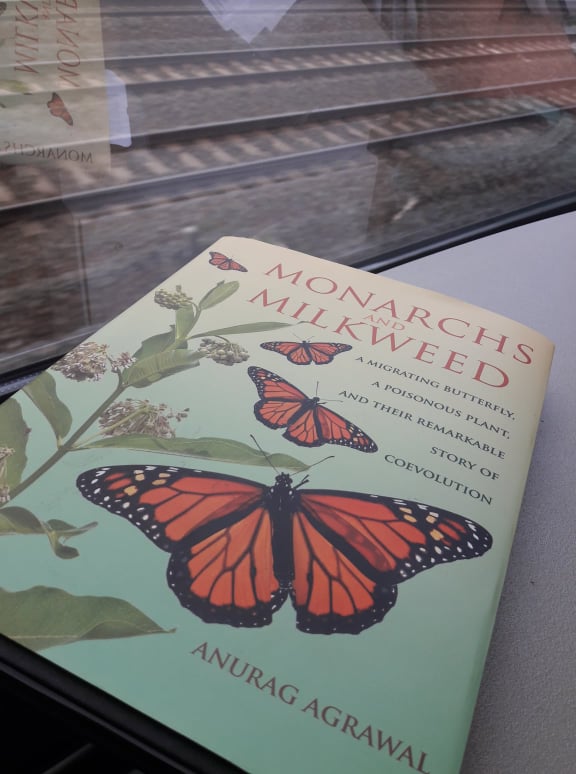
Wrong Phylum
- Details
- Written by Nicky Wybouw
When screening meadows and grassy patches for Bryobia populations, I typically meet different arthropod species. Spiders, springtails, aphids, ants and even the occassional weevil find their way into my white tray. Yesterday, something slightly bigger fell into my tray; a salamander. Only when my face was merely 10 cm removed from the tray, ready to screen for Bryobia mites, did I notice the lively vertebrate and got quite startled. Imagine looking for small rodents, but finding an elephant in your catch. Although absolutely not sure, I think it's a female palmate newt (Lissotriton helveticus).
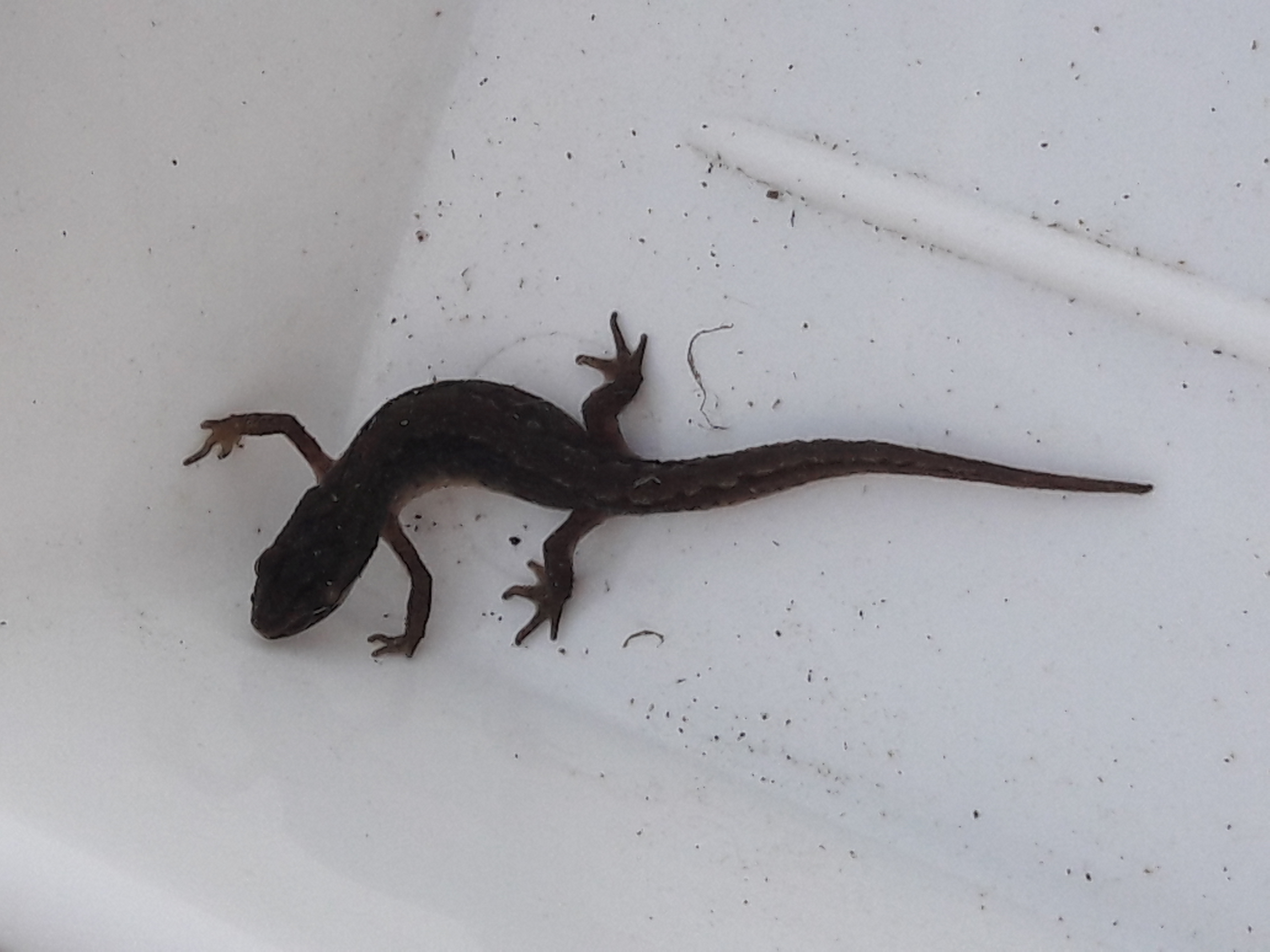
Summer conferences
- Details
- Written by Nicky Wybouw
Back behind the computer.
For the last weeks, I was in Napels and York to present our work at the European Conference of Entomology and the Cytochrome P450 Biodiversity & Biotechnology meeting. In Napels, I discussed how horizontal gene transfer contributes to the evolution of herbivory in insects and mites, whereas in York, I presented our latest findings on the genetic basis of carotenoid metabolism in spider mites.
CLC @ SLC
- Details
- Written by Nicky Wybouw
I was privileged to work in the lab of Prof Richard M Clark at the University of Utah for the past three weeks, an international lab visit that was funded by FWO.
During my stay, I mainly focused on Bryobia and Wolbachia genome assemblies and I got to experience all the weather conditions Salt Lake City has to offer in April; hail, snow and 20+°C summer days.
Now back in Ghent and finishing up our work on the genetic basis of keto-carotenoid pigment metabolism in spider mites.

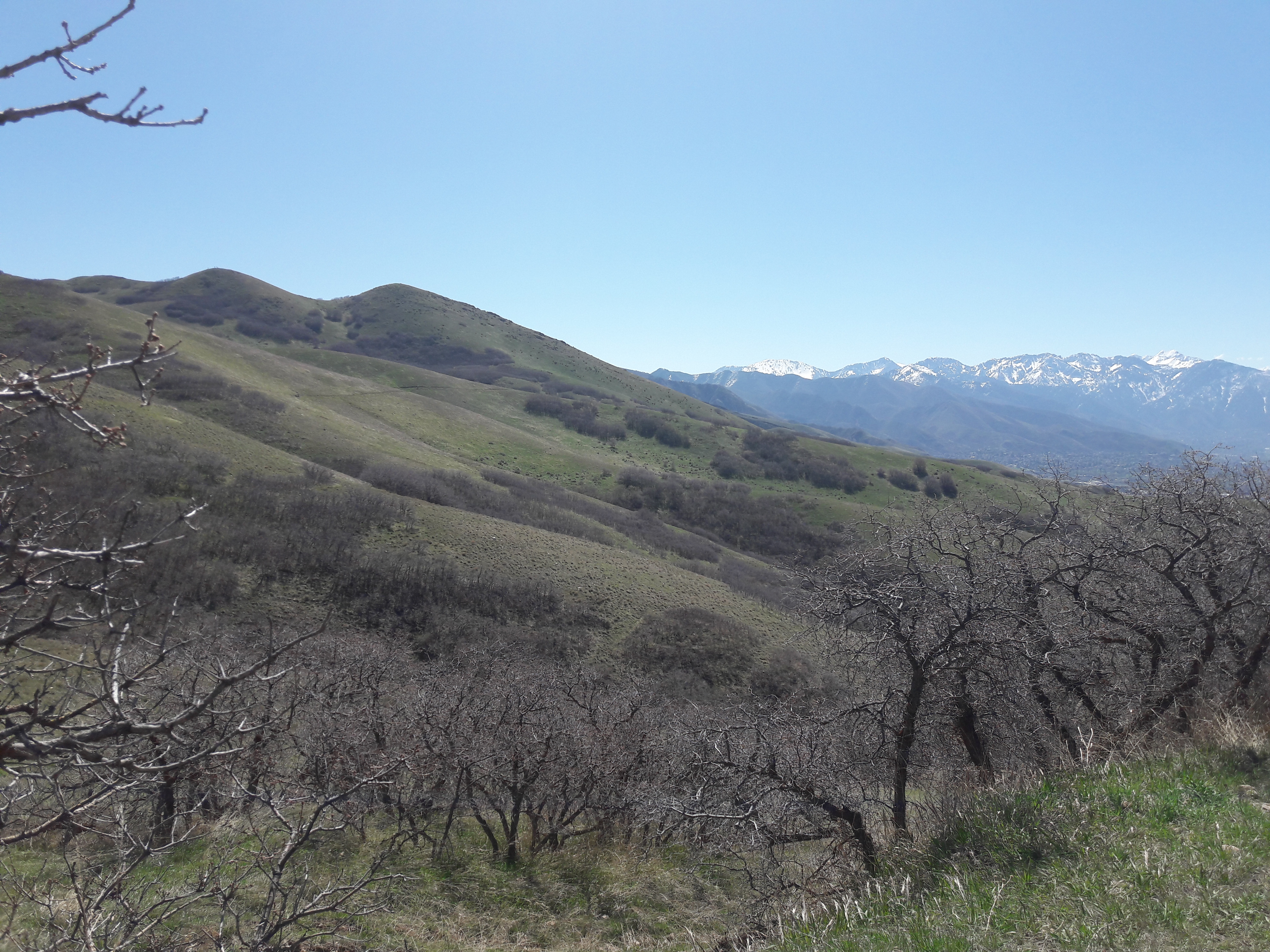
On another note,
- Details
- Written by Nicky Wybouw
during these last weeks of writing and bioinformatics, I appear to have unconsciously re-enacted a scene from Jurassic Park, one of my childhood favorite movies.
